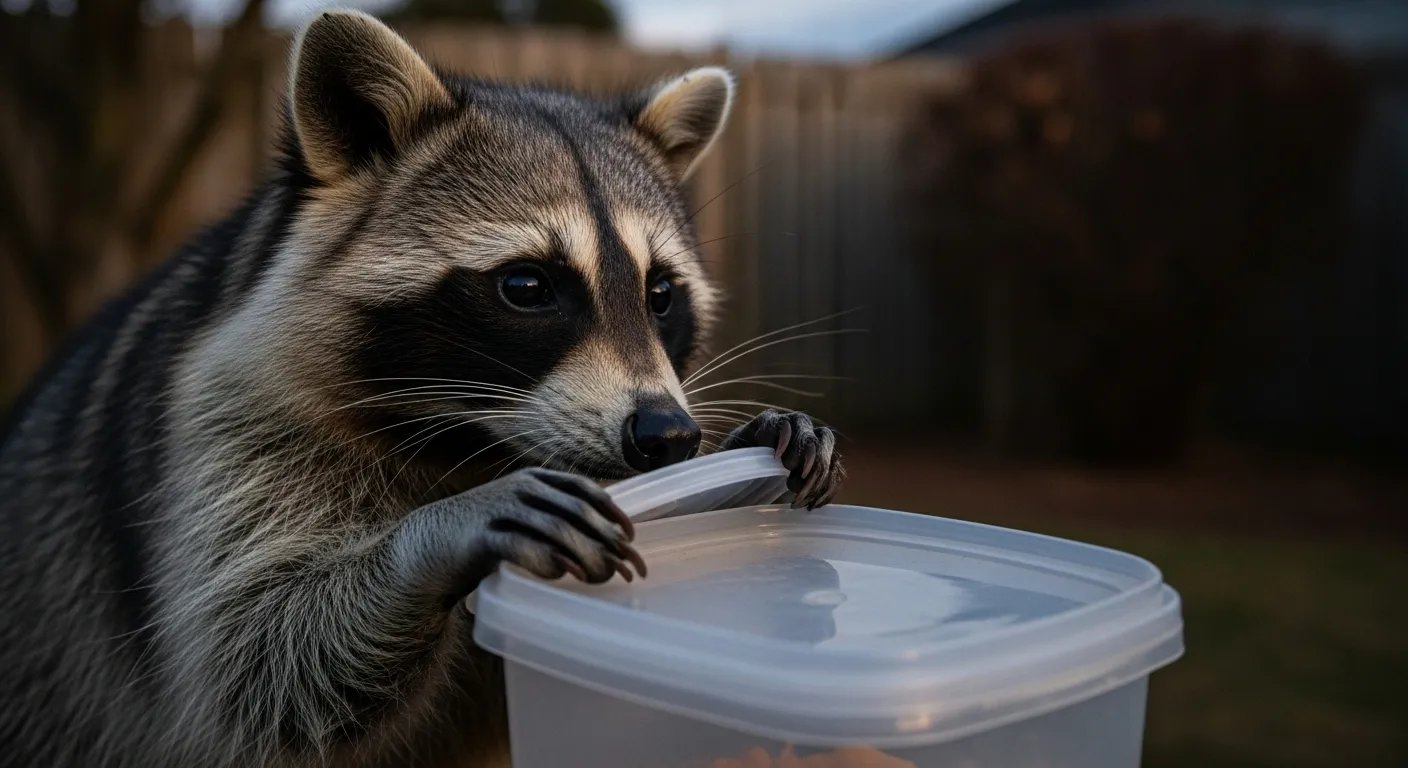
The Backyard Brigade: Common Mid-Sized Mammals
Many of North America’s most adaptable mammals are frequent visitors to our suburbs and cities. These clever creatures have learned to thrive alongside humans, and identifying them is often the first step for a new nature watcher.
The Raccoon (Procyon lotor)
Instantly recognizable, the raccoon is a master of adaptation found across nearly the entire continent. Its intelligence and dexterity allow it to thrive in forests, marshes, and urban centers alike.
Identification: The most famous field mark is the black “mask” of fur around its eyes, which helps reduce glare and enhances its night vision. Raccoons have a stocky, grayish-brown body and a distinctive bushy tail with 4 to 7 black rings. Their most remarkable feature is their front paws, which are incredibly sensitive and function much like human hands, allowing them to grasp, twist, and manipulate objects with ease. Their tracks are also distinctive, with the hind foot leaving a print that looks like a miniature human footprint.
Ecology and Behavior: So, what do raccoons eat? They are true omnivores, meaning they eat both plants and animals. Their diet is incredibly varied and changes with the seasons. In the wild, they forage for nuts, berries, insects, crayfish, frogs, and bird eggs. In urban areas, they are notorious for raiding trash cans, compost piles, and pet food bowls. This adaptability is the key to their success but can also lead to conflict with people. Raccoons are primarily nocturnal, meaning they are most active at night.
Coexistence Tips: The best way to live peacefully with raccoons is to remove attractants. Use trash cans with secure, locking lids. Do not leave pet food outside overnight. Secure access to chimneys, attics, and spaces under decks where they might seek to make a den. Never corner a raccoon; give it space to retreat.
The Virginia Opossum (Didelphis virginiana)
Often misunderstood, the Virginia Opossum is a fascinating and beneficial creature. It holds the title of North America’s only marsupial, a type of mammal that raises its young in a pouch.
Identification: Opossums have a unique look. They have a long, pointed snout filled with 50 teeth (more than any other North American mammal), a white face, and coarse grayish-white fur. Their ears are black, leathery, and hairless, and their long, rat-like tail is prehensile, meaning it can be used to grip branches for balance. They are roughly the size of a house cat.
Ecology and Behavior: Opossums are nocturnal omnivores with a preference for scavenging. They eat almost anything, including insects, snails, rodents, carrion (dead animals), fruit, and grains. They are particularly well-known for eating ticks; one opossum can consume thousands of ticks in a single season, helping to reduce the spread of Lyme disease. When threatened, an opossum may hiss and bare its teeth, but its most famous defense is involutary: it can enter a comatose-like state, commonly known as “playing possum,” to deter predators that prefer live prey.
Coexistence Tips: Opossums are generally harmless and non-aggressive. Like raccoons, they can be attracted to unsecured garbage and pet food. Because they are skilled climbers, trimming tree branches away from your roofline can help prevent them from accessing your attic. If you find one in your yard, it is likely just passing through on its nightly search for food.
The Striped Skunk (Mephitis mephitis)
Famous for its powerful chemical defense, the striped skunk is a common mammal that most people prefer to admire from a very safe distance.
Identification: The skunk’s bold black-and-white pattern is a form of aposematism, or warning coloration, signaling to potential predators that it is not worth the trouble. Its most common pattern is a thin white stripe on its face and a V-shaped white marking that starts on its head and extends down its back. Its body is robust with a large, bushy tail. Skunks are about the size of a house cat but lower to the ground.
Ecology and Behavior: Skunks are nocturnal omnivores. They use their long front claws to dig for grubs, insects, and larvae, which form a large part of their diet. They also eat small rodents, eggs, berries, and roots. Skunks do not want to use their defensive spray; they have a limited supply and it takes time to regenerate. Before spraying, a skunk will almost always give a clear warning: it will stamp its front feet, raise its tail, and may even perform a short handstand. The spray is a last resort.
Coexistence Tips: If you encounter a skunk, back away slowly and quietly. Do not make sudden movements or noises. At night, carry a flashlight to announce your presence and avoid surprising one. To prevent them from denning on your property, seal off openings under porches, sheds, and decks, but be sure to check that no animals are already inside before sealing any entrances.















